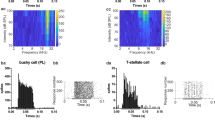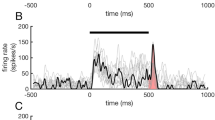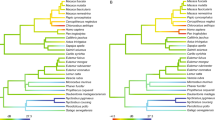Abstract
THE intensity of sound transmitted from the ear drum to the inner ear can be attenuated by contraction of the middle ear muscles, the tensor tympani and stapedius. These muscles contract at the onset of sound, thereby reducing the size of cochlear microphonics as recorded at the round window. Previous explanations of middle ear muscle activity have only considered possible acoustic functions1–4. However, in waking, unrestrained cats, we have found middle ear muscle activity related to non-acoustic factors, for example, bodily movement and vocalization. In animals that we have experimentally deafened by crushing both eight nerves, non-acoustic contractions persist in association with bodily movement and vocalization. In these animals all acoustic middle ear muscle activity is absent, the neural component is absent from the cochlear response recorded at the round window, and they show no behavioural reaction to loud sounds.
This is a preview of subscription content, access via your institution
Access options
Subscribe to this journal
Receive 51 print issues and online access
$199.00 per year
only $3.90 per issue
Buy this article
- Purchase on Springer Link
- Instant access to full article PDF
Prices may be subject to local taxes which are calculated during checkout
Similar content being viewed by others
References
Hallpike, C. S., J. Laryng. Otol., 50, 363 (1935).
Hilding, D. A., and Fletcher, J. L., Intern. Rec. M., 173, 369 (1960).
Wiggers, H. C., Amer. J. Physiol., 120, 771 (1937).
Simmons, F. B., and Beatty, D. L., Science, 138, 590 (1962).
Starr, A., and Livingston, R., J. Neurophysiol., 26, 716 (1963).
Klockhoff, I., Acta Otolaryng. (Stockholm), Supp. 164, 32 (1961).
Kato, T., pflüg. Arch. ges. Physiol., 150, 569 (1913).
Hugelin, A., Dumont, S., and Paillas, N., Electroencephalog. Clin. Neurophysiol., 12, 797 (1960).
Hernandez-Peon, R., Scherrer, H., and Jouvet, M., Science, 123, 331 (1956).
Simmons, F. B., and Beatty, D. L., Science, 138, 590 (1962).
Carmel, P., and Starr, A., J. Neurophysiol., 26, 598 (1963).
Author information
Authors and Affiliations
Rights and permissions
About this article
Cite this article
CARMEL, P., STARR, A. Non-acoustic Factors influencing Activity of Middle Ear Muscles in Waking Cats. Nature 202, 195–196 (1964). https://doi.org/10.1038/202195a0
Issue Date:
DOI: https://doi.org/10.1038/202195a0
This article is cited by
-
Interaction of acoustic and vestibular afferent activity observed in ear muscles
Zeitschrift f�r Neurologie (1971)
-
Effect of Attention on Evoked Responses in the Classical Auditory Pathway
Nature (1965)
Comments
By submitting a comment you agree to abide by our Terms and Community Guidelines. If you find something abusive or that does not comply with our terms or guidelines please flag it as inappropriate.



